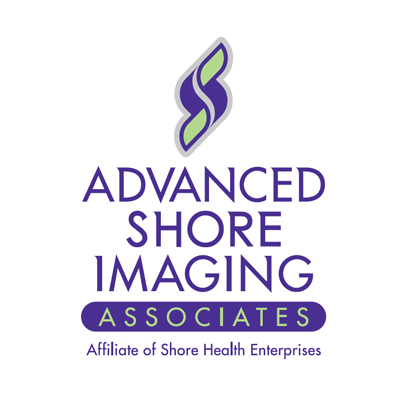Follow Us x
MRI
Magnetic Resonance Imaging, MRI, produces remarkable images of the brain, spine, joints and other organs to determine the severity of patient injuries and conditions. Our MRI equipment is the GE Optima Wide Bore. It is 16% wider than traditional MRIs providing for a more comfortable experience especially for larger individuals, up to 500 pounds, and those prone to anxiety or claustrophobia. Our MRI technology reduces your total exam time and delivers a cooler, quieter scanning experience. We are able to offer an improved patient experience while continuing to deliver exceptional image quality for confidence in diagnosis.
Advanced Shore Imaging Associates has the ability to offer Silent Scan which is a technology that makes your scan as quiet as a whisper. Typical MRI scans can reach over 100 decibels which is equal to the sound of a jackhammer, a speeding freight train or what you would hear sitting in the front row at a rock concert. You may choose the Silent Scan to improve your experience.
MRI's are used for diagnosis of many parts of the body.
- MRI imaging for the brain shows evidence of TIA's, strokes/CVA, tumors, nerve damage, cognitive impairment, visual and auditory impairments and pituitary gland disorders.
- Abdominal MRI shows dysfunction or disorders involving liver, spleen, kidneys, pancreas, gallbladder and adrenal glands.
- MRI of the Breast is used for detection of breast cancer, infection or implant rupture. We also use additional advanced CAD software after the exam is complete, for better visualization of the images.
- MRI of the pelvis also helps identify problems within the bladder, colon, prostate gland, uterus, and ovaries. Extra advanced CAD software is also used on the prostate gland for more precise diagnoses.
- Spinal conditions are also examined using MRI. Conditions include spinal stenosis, tumors, infections, disc bulges, herniations or nerve damage.
- Orthopedic doctors use MRI for many applications. It can examine bones, joints, ligaments, tendons, cartilage, arthritis, infection, hardware placement or tumors. Metal suppression techniques can be used when prothesis are placed in the area of interest.
- MRA and MRV's (Angiogram and Venogram) are also helpful diagnostic exams used throughout the body. These exams are helpful with diagnosing stenosis, aneurysms, blood related diseases, plaque disease and possible obstructed vessels.
- *Other complications can be diagnosed using MRI/MRA/MRV, but may not be listed.




